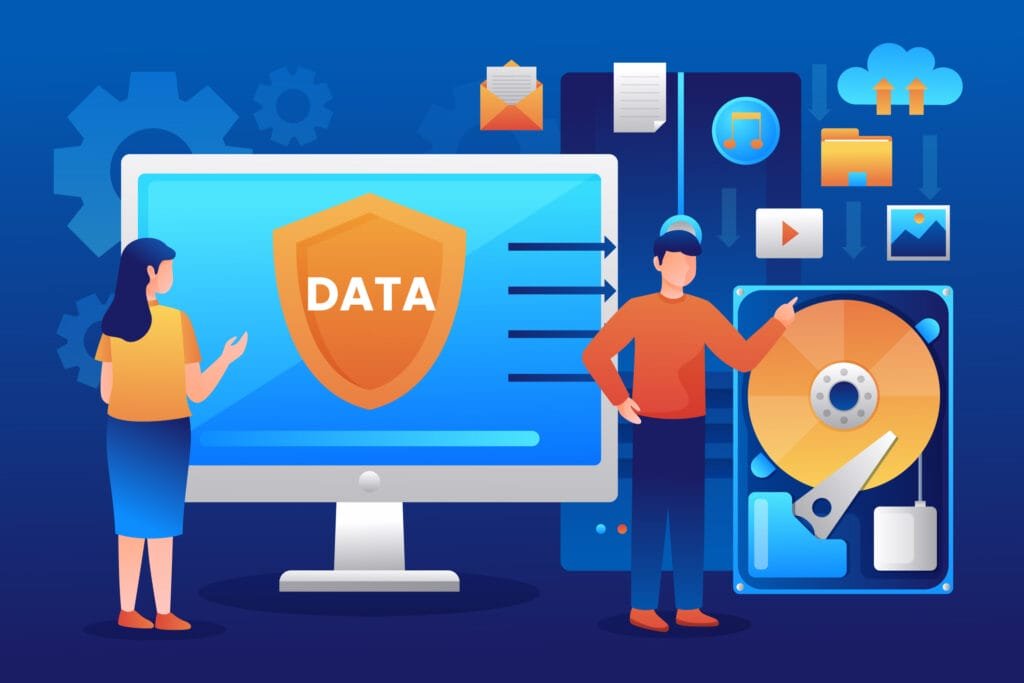How Secure Are You? Understanding the Alight Data Breach
The security of personal data is a top priority for both individuals and enterprises in the current digital era. The recent Alight data breach is a sobering reminder of the weaknesses inherent in our world’s growing interconnectivity.
Introduction to Data Breaches
When private information is achieved, taken, or made public by unauthorized individuals, it is called a data breach. Personal data like names, addresses, social security numbers, and financial information can fall under this category. The risk of data breaches has increased due to the spread of digital platforms and the massive volumes of data kept online.
Overview of the Alight Data Breach
The security of personal data in the digital era has come under scrutiny following the recent major data breach at Alight Systems, an established manufacturer of HR and benefits administration systems. This section examines the incident in more detail, highlighting the circumstances leading up to the breach and its ramifications.
Established in 1940, Alight Solutions has its headquarters located in Lincolnshire, Illinois, and it serves millions of clients globally as a leading provider of HR services. Focusing on providing cutting-edge solutions to enhance employee engagement and expedite benefits administration, Alight has grown to be a dependable partner for companies of all sizes.
But when word leaked out about a big data breach that affected its systems, Alight Solutions—despite its standing and experience in the field—found itself in the press for all the wrong reasons. The breach, which happened on [insert date], led to thousands of people’s sensitive personal information being accessed without authorization and exposed.
Although the precise nature and scope of the breach are still being looked into, early indications suggest that hackers were able to access Alight’s databases by taking advantage of security system vulnerabilities. The effectiveness of Alight’s cybersecurity procedures and its capacity to protect the private data entrusted to its care have come under severe scrutiny in the wake of this hack.
Causes of the Alight Data Breach
Like many other cyber events of this type, the Alight data breach was the consequence of multiple vulnerabilities and oversights within Alight Solutions’ cybersecurity infrastructure rather than being the product of a single, isolated issue. Gaining insight into the breach’s root causes is essential to averting future occurrences of this kind and enhancing general data security procedures.
Vulnerabilities in Alight Solutions’ security mechanisms were a major contributing element to the Alight data breach. These vulnerabilities can have been caused by out-of-date software, unpatched security holes, or incorrect network infrastructure setups within the organization. Organizations may become vulnerable to assaults if known vulnerabilities are not quickly fixed. Hackers are skilled at using these exploits to obtain unauthorized access to systems and data.
Weak password management procedures and authentication methods are two other possible sources of the incident. Hackers can gain access to a company’s systems through shared credentials, weak or easily guessed passwords, and insufficient access restrictions. From there, they can move laterally and increase privileges to access critical data. The risk of unwanted access can be greatly decreased by putting multi-factor authentication, strong password restrictions, and frequent password changes into place.
It’s also possible that inadequate encryption of private information contributed to the hack. Data encryption is essential to data security because it makes sure that, even if unapproved parties obtain encrypted data, they will be unable to decrypt it without the right decryption keys. Sensitive data should always be encrypted to prevent hackers from receiving and using it against you. This emphasizes the need to use strong encryption mechanisms.
Impact on Individuals and Companies

Impact on Individuals and Companies
The companies connected to Alight Solutions as well as the people whose personal information was stolen have suffered significant consequences as a result of the Alight data breach. Comprehending the magnitude of these consequences is crucial in understanding the complete implications of the breach and the actions required to mitigate its consequences.
Effects on Individuals’ Personal Information
The repercussions for the people whose personal information was compromised in the Alight data hack may be serious and protracted. Cybercriminals find great value in personal information including names, addresses, social security numbers, and financial information, which they may use for a variety of nefarious activities.
The increased danger of identity theft and fraud is one of the main concerns for anyone impacted by the breach. Hackers can use sensitive personal information to open fake accounts, apply for credit cards or loans, impersonate someone, and carry out other fraudulent activities. Identity theft can have a severe financial and emotional impact; victims frequently need to spend years resolving problems arising from fraudulent transactions and regaining their creditworthiness.
Repercussions for Alight Solutions and Affiliated Companies
In addition to the immediate effects on individuals, Alight Solutions and its wider network of partners, clients, and stakeholders have been affected by the data breach. Alight’s standing as a reliable supplier of HR solutions has taken a blow as a result of the breach, which has also raised concerns about the company’s capacity to protect confidential data and maintain customer confidence.
The breach has significant financial ramifications as well, since it may need to pay for remediation operations, legal fees, regulatory fines, and settlements with impacted parties. Alight Solutions may potentially lose out on commercial prospects, lose investor trust, and come under further scrutiny from industry watchdogs and regulatory bodies as a result of the harm done to its reputation.
Moreover, the incident has wider ramifications for data security procedures in the HR sector and elsewhere. Businesses in every industry are reviewing their cybersecurity policies and making investments in measures to increase their resistance to online attacks. Companies should prioritize data security and take a proactive approach to reducing the risks of data breaches in light of the Alight data leak.
Response from Alight Solutions
Following the discovery of the Alight data breach, Alight Solutions moved quickly to limit the harm, reduce the risks, and win back the confidence of its stakeholders and clients. This section explores the steps that Alight Solutions took following the breach, emphasizing their attempts to resolve the situation and stop future occurrences of the same kind of breach.
Immediate Actions Post-Breach
Alight Solutions launched a thorough investigation as soon as the breach was discovered to ascertain the incident’s cause and extent. To determine who was responsible and how much damage had been done, this investigation included forensic analysis of the compromised systems, working with cybersecurity specialists, and coordinating with law police.
Alight Solutions quickly isolated the intrusion and stopped additional unauthorized access to their systems while the investigation was continuing. This involved putting in place stronger security measures, like firewall configurations, network segmentation, and access controls, to lessen the effects of the hack and stop more data from being stolen.
Communication with Affected Parties
Alight Solutions’ response plan focused on communication and transparency as it worked to notify impacted parties of the incident and the actions being taken to rectify it. Those whose personal information was compromised in the hack were swiftly alerted by Alight Solutions, who also gave them advice on how to guard against identity theft and fraud.
Moreover, Alight Solutions kept its clients, partners, and regulatory agencies informed regularly about the investigation’s progress and the steps being taken to tighten data security procedures. This transparent and proactive communication strategy showed Alight Solutions’ commitment to accountability and transparency while also reducing stakeholder worries.
Enhanced Security Measures
Following the intrusion, Alight Solutions enhanced its defenses against potential cyberattacks by putting in place several improved security measures. To reduce the dangers of insider threats and human error, this involved improving staff training and awareness programs, investing in sophisticated threat detection and response capabilities, and updating its cybersecurity infrastructure.
Collaboration and Partnerships
Alight Solutions actively collaborated with industry partners, cybersecurity experts, and regulatory agencies to exchange knowledge, insights, and best practices for improving data security because it recognized the complexity and dynamic nature of cybersecurity threats. Working with outside partners gave Alight Solutions access to insightful perspectives and specialized knowledge that helped fortify company defenses and reduce potential threats.
Measures for Securing Personal Data
Following the Alight data breach, both individuals and enterprises are forced to face the frightening reality of cyber dangers and the significance of bolstering data security protocols. The proactive actions that people and organizations can take to protect personal information and reduce the possibility of future breaches are covered in this section.
Importance of Strong Passwords and Encryption
Encrypting sensitive data and using strong passwords to prevent unauthorized access are two essential components of data security. For every online account, people should make a different, strong password; they should also refrain from using phrases or words that are simple to figure out. By forcing users to confirm their identification with a second factor—such as a one-time code given to their mobile device—multi-factor authentication also adds an extra degree of protection.
Regular Updates and Security Audits
Maintaining software and security updates current is crucial for fixing vulnerabilities that have been identified and reducing the possibility that hackers would take advantage of them. To patch known vulnerabilities and defend against new threats, people and businesses should update their operating systems, apps, and security software regularly.
Employee Training and Awareness
The primary cause of data breaches is still human error, which emphasizes the significance of staff education and awareness programs in reducing cybersecurity risks. Employers should offer thorough training programs to staff members so they can teach them about the value of data security, typical cyber threats, and the best ways to protect confidential data.
Importance of Data Security Education

Importance of Data Security Education
Given the increasing frequency and complexity of cyberattacks, both individuals and businesses must receive data security education. The significance of teaching staff members and customers about data security best practices and strategies for raising awareness and proactively mitigating risk is discussed in this section.
Promoting Awareness Among Employees and Consumers
Good data security education starts with educating staff members and customers about the value of protecting sensitive data and the possible repercussions of data breaches. Organizations can enable people to detect and manage possible risks by giving them easily understood information about prevalent cyber threats, including malware infections, phishing scams, and social engineering techniques.
Training Programs and Resources
Employees must be provided with extensive training programs and tools to acquire the information and abilities necessary to successfully traverse the intricate world of data security. Regular workshops, online courses, and training sessions on subjects including email hygiene, incident response procedures, password security, and safe browsing practices should be offered by organizations.
Legal Ramifications and Compliance
Following data breaches such as the one that Alight Solutions encountered, businesses are faced with a convoluted web of legal implications and regulatory compliance requirements. This section looks at ways to reduce legal risk, the significance of adhering to data protection rules, and the legal ramifications of data breaches.
Overview of Data Protection Laws
Data protection laws and regulations require that organizations uphold the rights of individuals to privacy and control the gathering, use, and dissemination of personal data. Although these regulations differ from jurisdiction to jurisdiction, they usually require businesses to put in place appropriate security measures to protect sensitive data and alert impacted parties in the event of a data breach.
Strategies for Mitigating Legal Risks
Organizations should prioritize adhering to data protection rules and putting strong data security measures in place to stop breaches from happening in the first place to reduce the legal risks connected with data breaches. To effectively handle breaches, this includes carrying out regular risk assessments, putting security controls and safeguards in place, and creating incident response plans.
Future Trends in Data Security
Data security is a dynamic field that is always changing as technology advances and cyber threats get more complex. This section explores new developments and trends in data security techniques and technology, along with projections for the field’s future.
Advancements in Cybersecurity Technology
The continuous improvement of cybersecurity technology to counteract more complex cyber threats is one of the most important developments in data security. By analyzing huge amounts of data to find patterns and anomalies suggestive of malicious behavior, artificial intelligence (AI) and machine learning (ML) are becoming more and more crucial in the detection and mitigation of cyber threats.
Shift Towards Zero Trust Architecture
The move toward a Zero Trust architecture, that challenges the conventional perimeter-based approach to cybersecurity by presuming that dangers exist both inside and outside the network, is another new trend in data security. Zero Trust architecture restricts access to critical resources and stops attackers from moving laterally by utilizing the concepts of least privilege, micro-segmentation, and continuous authentication.
Rise of Privacy-Preserving Technologies
There is an increasing need for privacy-preserving technologies that allow organizations to evaluate and draw conclusions from sensitive data without violating individuals’ right to privacy, as worries about data privacy and regulatory compliance grow. Technologies that protect individual data subjects’ privacy while enabling companies to gather and analyze data from various sources include federated learning, secure multi-party computation, and differential privacy.
Integration of Security into DevOps Practices
A rising number of businesses are realizing how important it is to incorporate security into the DevOps lifecycle as they adopt DevOps techniques to speed up software development and deployment. By integrating security policies and testing procedures into the software development pipeline, DevSecOps, sometimes known as “security as code,” enables businesses to find and fix vulnerabilities early in the process.
Conclusion
The Alight data leak is a sobering reminder of how vital data security is in the connected world of today. The incident highlights the ubiquitous and dynamic nature of cyber threats and the importance of taking proactive actions to protect sensitive information, from the first breach discovery to the subsequent response operations and ongoing ramifications for individuals and organizations.
Organizations must continue to be alert and flexible in their approach to data security as technology develops and cyber threats get more complex. This includes putting in place strong security measures, making observing data protection laws and regulations a top priority, and encouraging staff and customers to adopt a security-aware culture.
Finally, the Alight data leak is a sobering reminder of the constant threat posed by hackers and the importance of strong data security protocols. Organizations can enhance their ability to prevent data breaches and maintain the trust and confidence of their stakeholders, clients, and partners by applying proactive security measures, learning from the breach, and staying up to date on emerging trends and technological advancements in data security.
FAQs
How common are data breaches like the Alight incident?
Data breaches are unfortunately quite common in today’s digital landscape, with thousands occurring each year across various industries.
What steps should I take if I believe my personal information has been compromised in a data breach?
If you suspect that your personal information has been compromised in a data breach, you should immediately contact the affected company, monitor your financial accounts for any suspicious activity, and consider placing a fraud alert on your credit report.
Can individuals hold companies accountable for data breaches?
In many cases, individuals affected by data breaches can take legal action against the responsible company for negligence in protecting their personal information.
How can companies prevent data breaches like the one experienced by Alight Solutions?
Companies can reduce the risk of data breaches by implementing robust cybersecurity measures, regularly updating their security protocols, and providing comprehensive training to employees on data security best practices.
What role does government regulation play in data security?
Government regulations such as GDPR in Europe and CCPA in California set standards for data protection and impose penalties for non-compliance, incentivizing companies to prioritize data security.







